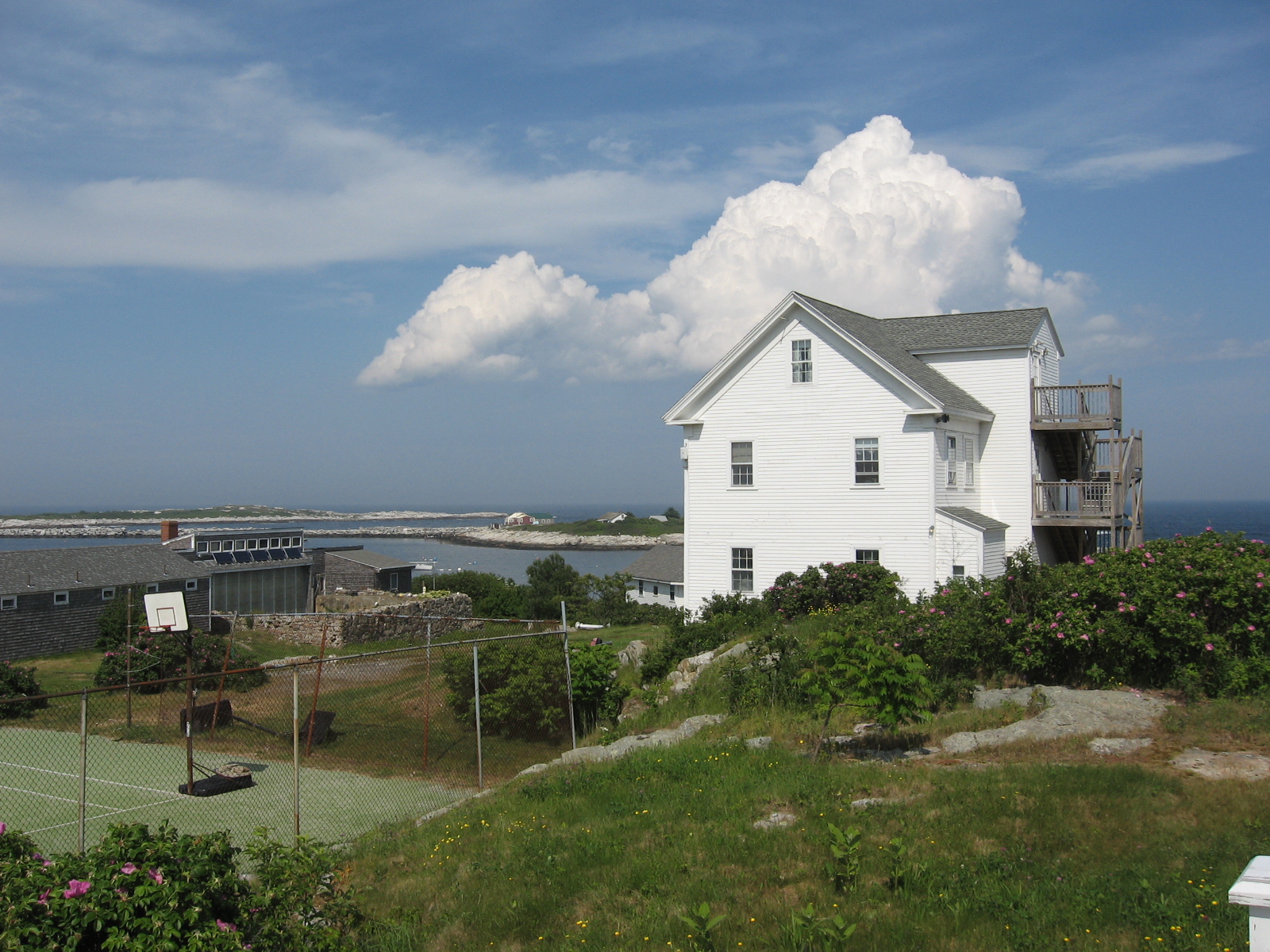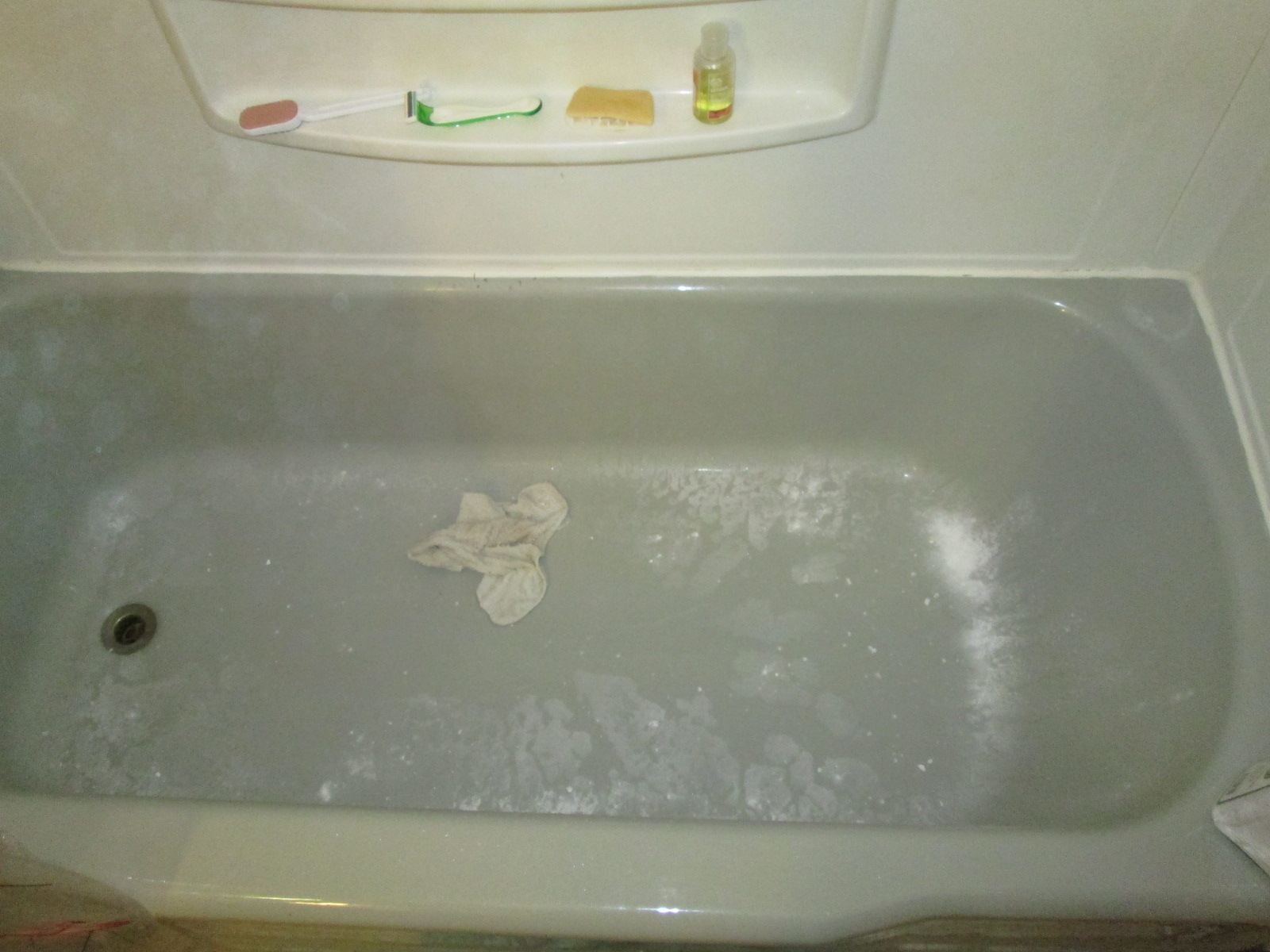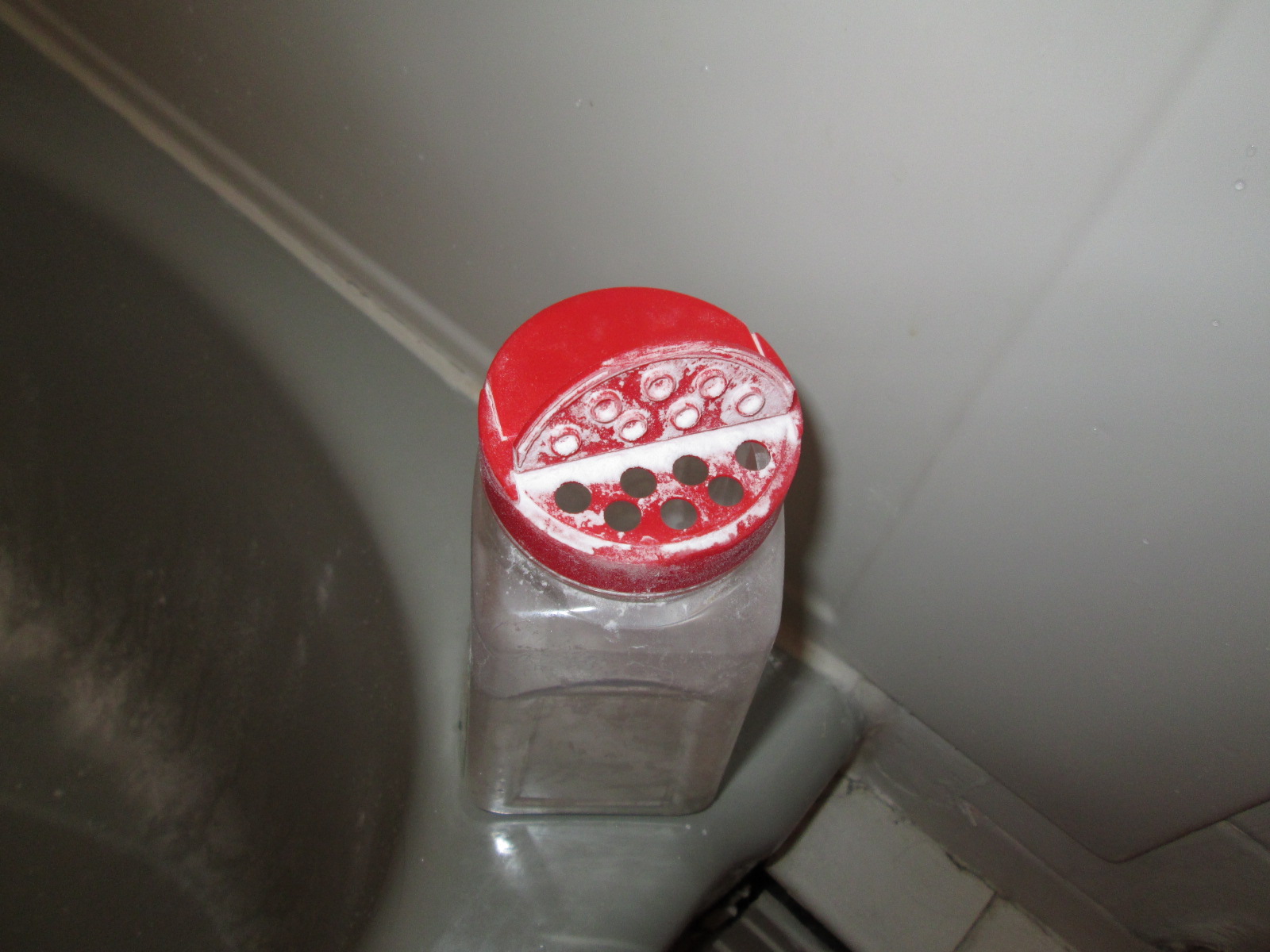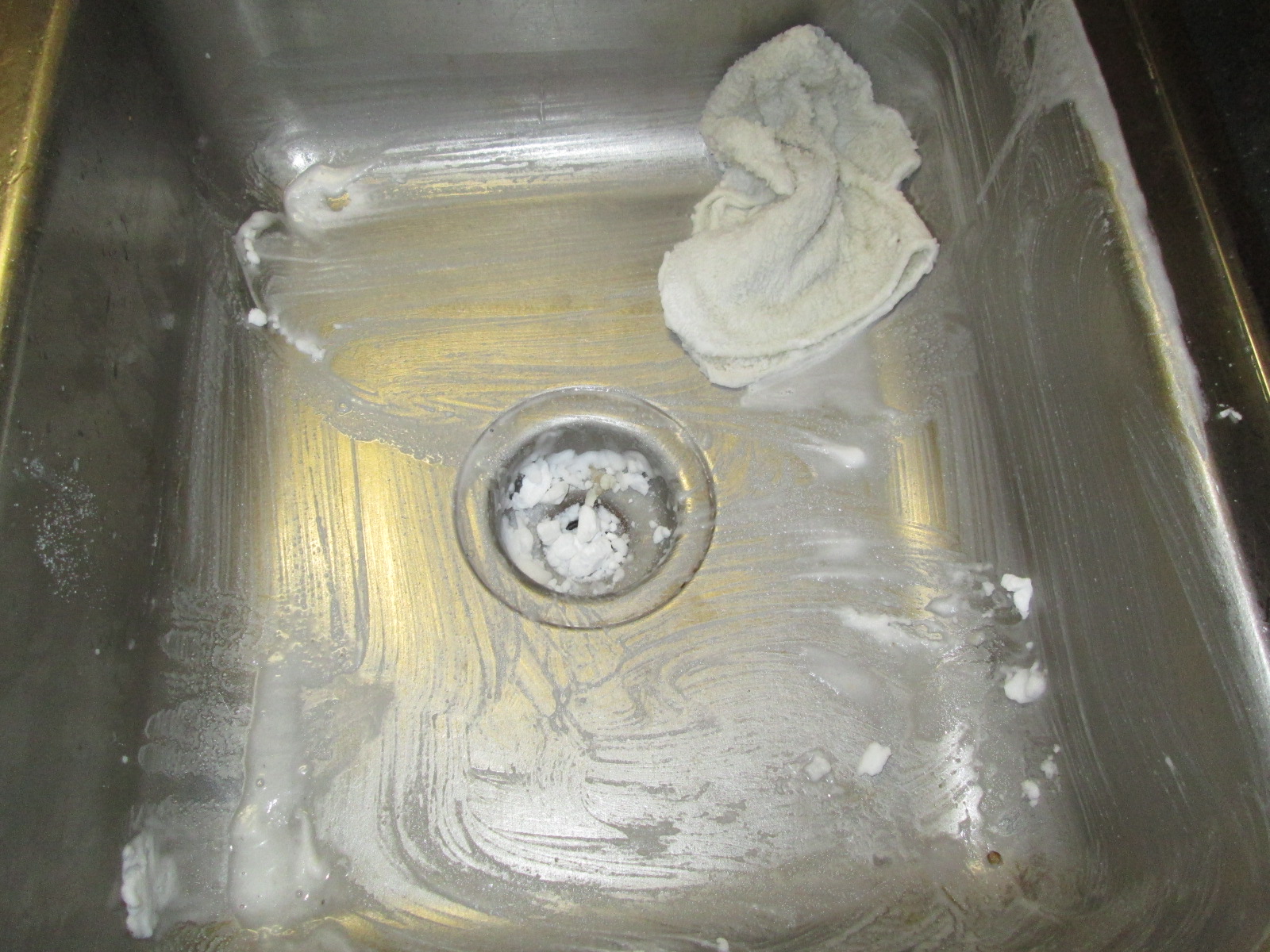
Here, look at this pretty photo of Star Island’s research center, as my bathtub isn’t that exciting.
Why not start the cleaning series with the deep cleaning of scrubbing? This is a method more than a recipe, and works on bathtubs as well as kitchen and bathroom sinks.
Now if you do some searching online, you will find lots of recipes to make scrubs for this purpose. I’ve tried a few, but I’ve found my method to be just as effective, and more importantly, a little easier.
Sinks and Tubs
You need the following:
- a cleaning cloth or sponge (I prefer terrycloth washrags)
- baking soda
- castille or other liquid soap, scented with essential oils if you like
- water
- a dirty sink or bathtub
Wet the bathtub. I do this by turning the shower on for a minute.

Sprinkle the tub with baking soda. I have a large plastic container once used for a massive quantity of Italian Seasoning that I got from a recycling bin. It’s perfect for this.

Wet your cloth, and add a tablespoon or so of castille soap.
Scrub.

Rinse.
It really is that easy. This make take a bit more rinsing than your commercial cleansers do, but any residue left on your sink or tub is non-toxic. If you have kids who use your bathtub or pets who like to lick the water out of the tub, you don’t need to worry.
Toilets
This method also works for toilets, just using your toilet brush instead of your cloth. Here, I do add a few drops of essential oil for freshening up, but it’s not necessary.
Alternately, sprinkle your toilet bowl with baking soda and add about a cup of white vinegar. Let it foam, then scrub with your toilet brush.
Now, I am aware that this cleaning method doesn’t likely have the germ and microbe killing powers of, say, bleach. But I don’t feel the need to fully disinfect the toilet — I don’t eat out of it — and cleaning it will get rid of most of the bacteria.
Drains
Now, since I have everything out anyway, I usually treat the drains at this time, too. This will not remove a clog in your drain, but it will keep things moving along in a reasonable manner.
For sinks, dump about 1/4 cup of baking soda down the drain. Then slowly pour a cup or so of white vinegar down after it. I usually don’t measure the vinegar — I just pour slowly until it stops foaming in a satisfying manner. Don’t use the sink/drain for 30 minutes or so, to let the vinegar/baking soda volcano do its work throughout. (To be honest, I don’t know if this is necessary or even useful, but it sounds like a good idea and I use it as an excuse to take a break from cleaning.)
For extra drain clog-monster banishing power, follow this with a pot or kettle full of boiling water.
For the skeptics, I do not have a garbage disposal, so bits of food do go directly down my kitchen drain. I do this treatment every 3 to 4 months. In 5 years, I have never needed a chemical drain cleaner on my kitchen sink, which is good, because have you read the warnings on those? They’re scary.
So this is a very simple and cheap way of cleaning that is also allergen-friendly and environmentally-friendly. Got any tips you’d like to share?
